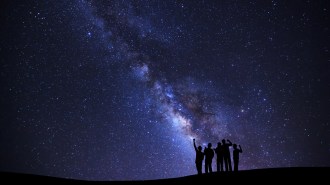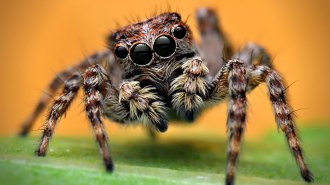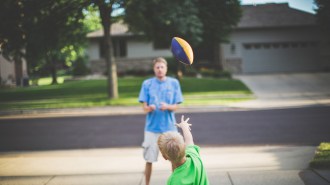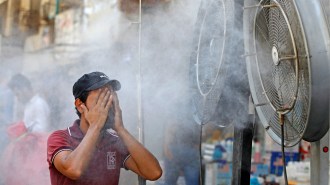Search Results
May the force move you
NASA’s DART mission knocked an asteroid off course. Use the mission to teach core physics principles — including force and Newton’s laws of motion. Learning outcomes: Application of forces and Newton’s laws of motion.
Bumping asteroids off course
Students will answer questions about a NASA mission to smash a spacecraft into an asteroid after reading a Science News article and watching a Science News TikTok video about the mission. A version of the article, “NASA’s DART mission is a success,” appears in the November 5, 2022 issue of Science News.
Seeing faces everywhere
Ever seen a face in the moon? Or a slice of toast? What about the front of a car (and not just the characters in the movie Cars)? If so, you’re in good company. Many people see faces in commonplace objects. After learning about face pareidolia, the phenomenon of seeing faces in everyday objects, students will collect images of faces they find in nature and inanimate objects and then poll classmates on the perceived gender of the faces. Students will compare their results to results from a study reported in Science News and then design their own follow-up research on face pareidolia.

The Scientists to Watch Lesson Plan Collection
Want to expose your students to various fields of scientific research and inspire them to pursue STEM careers? Introduce them to some rising stars of science! In this guide, based on Science News’ list of up-and-coming researchers, students can hear the stories of inspiring scientists and explore pathways to STEM careers. Learning Outcomes: STEM careers, fields of scientific research

News Stories Give Spiders a Bum Rap
Are your students creeped out by spiders? They aren’t alone. In this guide, students will learn about how inaccurate news coverage has promoted common misconceptions about the largely harmless critters. Students can also discuss misinformation, thinking about where they’ve encountered it before, its impacts and ways to correct it.
Being mindful of misinformation
Let spiders and their unfair reputation help you teach students about identifying and correcting misinformation. Learning outcomes: Media literacy, communicating information.
Spinning tales about spiders
Students will answer questions about the online Science News article “News stories have caught spiders in a web of misinformation,” which describes new research looking at how spiders are portrayed by the media. A version of the article, “News stories give spiders a bum rap” appears in the September 24, 2022 issue of Science News.

Why Spiraling Footballs Sometimes Miss the Mark
Engage your students in science using sports! In this guide, students can explore the physics of football throws and apply the scientific method to a sport of their choice.
Flying football physics
Students will answer questions about the online Science News article “Spiraling footballs wobble at one of two specific frequencies,” which describes how researchers figured out why spiraling footballs sometimes drift sideways. A version of the article, “Why spiraling footballs sometimes miss the mark,” appears in the September 10, 2022 issue of Science News.
Solving sports problems with science
Get your students exploring the scientific method by applying scientific problem-solving to their favorite sport. Learning outcomes: Scientific method.
Extraordinary scientists are ordinary people
Help your students connect and relate to current scientists from diverse backgrounds with this activity. Students will then find articles about ongoing science research that links the work of the scientists to real-world questions. Learning outcomes: Basic collaboration and listening skills; ability to use a computer with internet access

How Much Heat Can We Handle?
Summers are getting hotter. Use this guide to help students explore the science of heat and its effects on the body, and then apply what they learn through diagramming.